The monobar story
Atmospheric
Diving
Suits 1921-today
1921-1978
Joseph Salim Peress
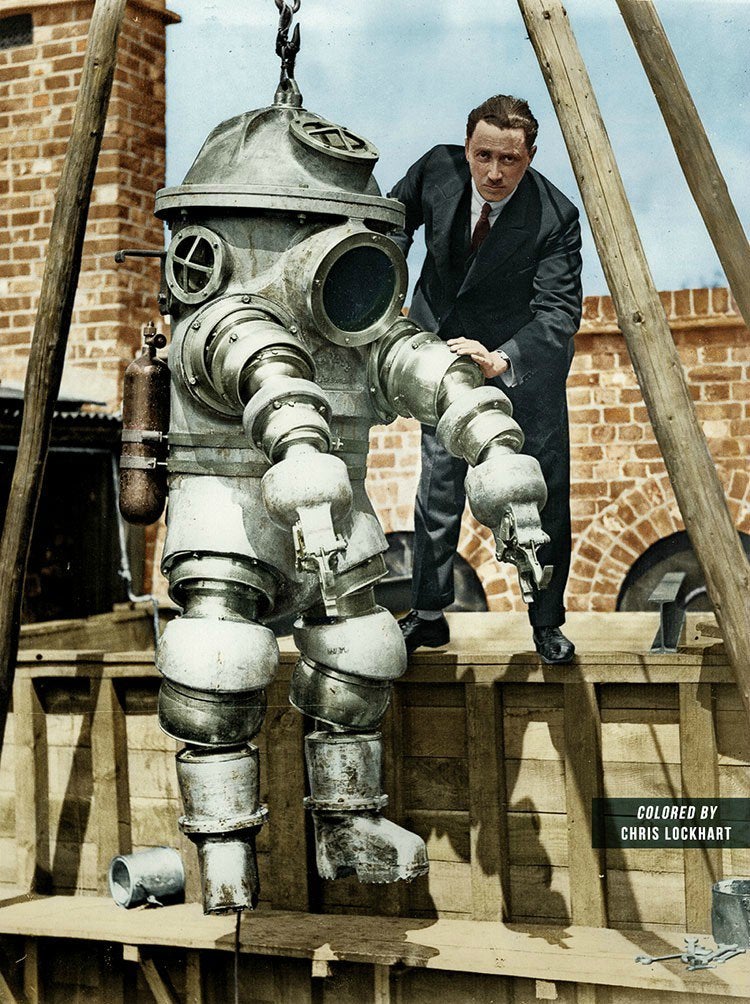
Not many inventors have had as much influence on the development of the atmospheric diving suit as Joseph Salim Peress. As early as 1918, after having spent his youth in the Middle East, he began to dream about an atmospheric diving suit. In 1921 he realised his dream. This dream continued until the 1970s when, as a senior citizen in retirement, he contributed to the development of diving suits such as JIM. Here is the story of Peress!
1921
Arthur Phelps Marr flexible arm
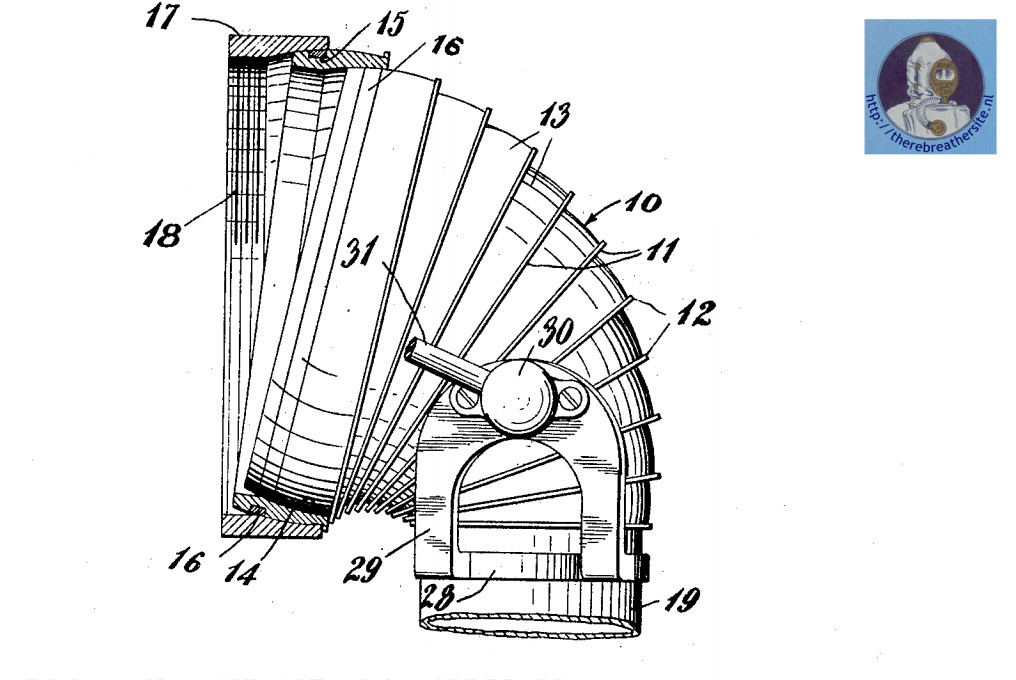
This invention relates to an improved non-collapsible flexible joint for diving armor and has for its principal object to provide a joint which is so designed as to permit the bending of a limb and yet protect the same from external pressure.
1921
Manfred Carlon Stockholm Sweden
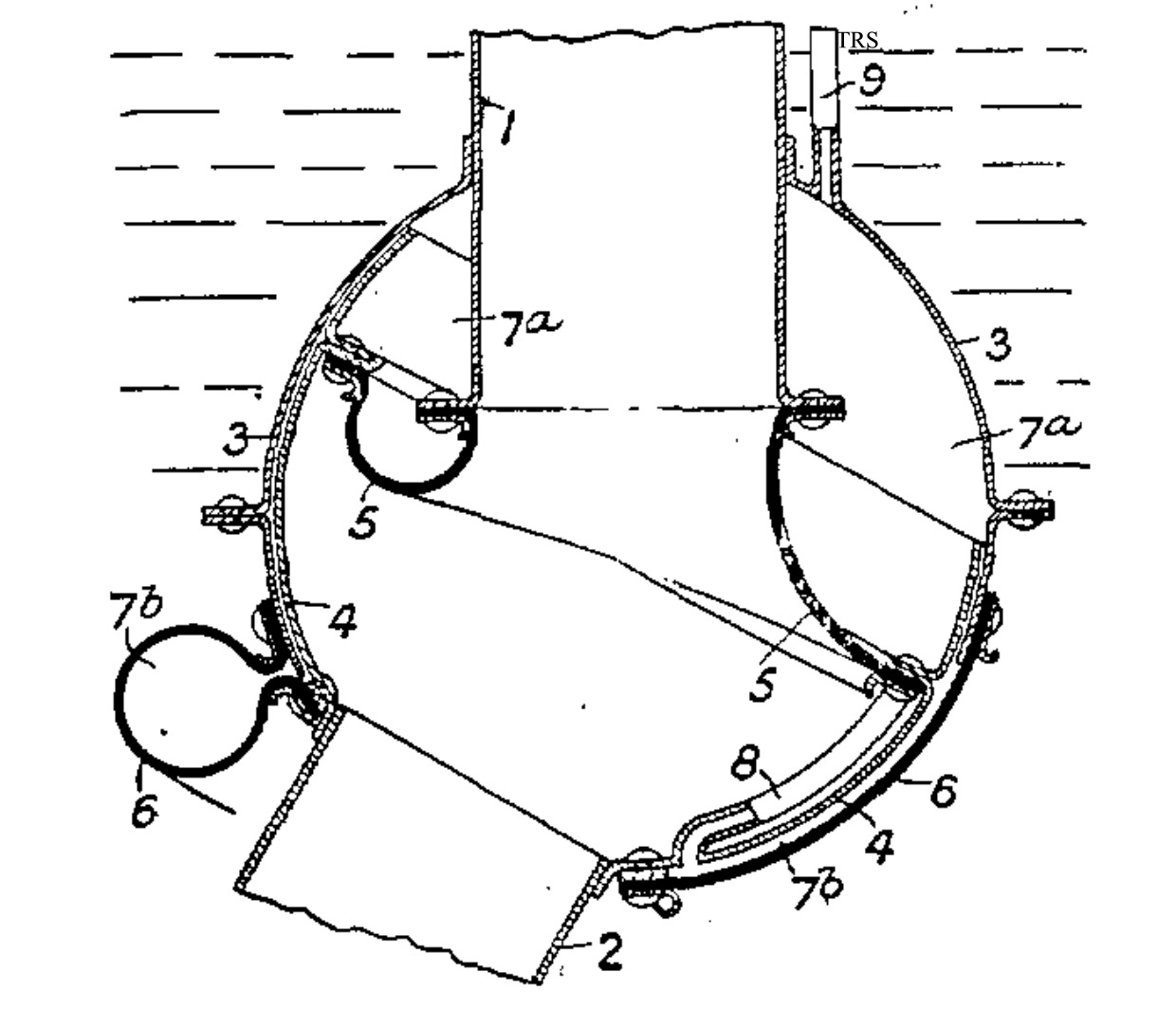
Another patent for a movable coupling that could be used for various purposes including diving suits. Like Drager’s patent, the search for the ideal coupling continued and was finally solved by Peress in 1929.
1921
Henry D. Deam
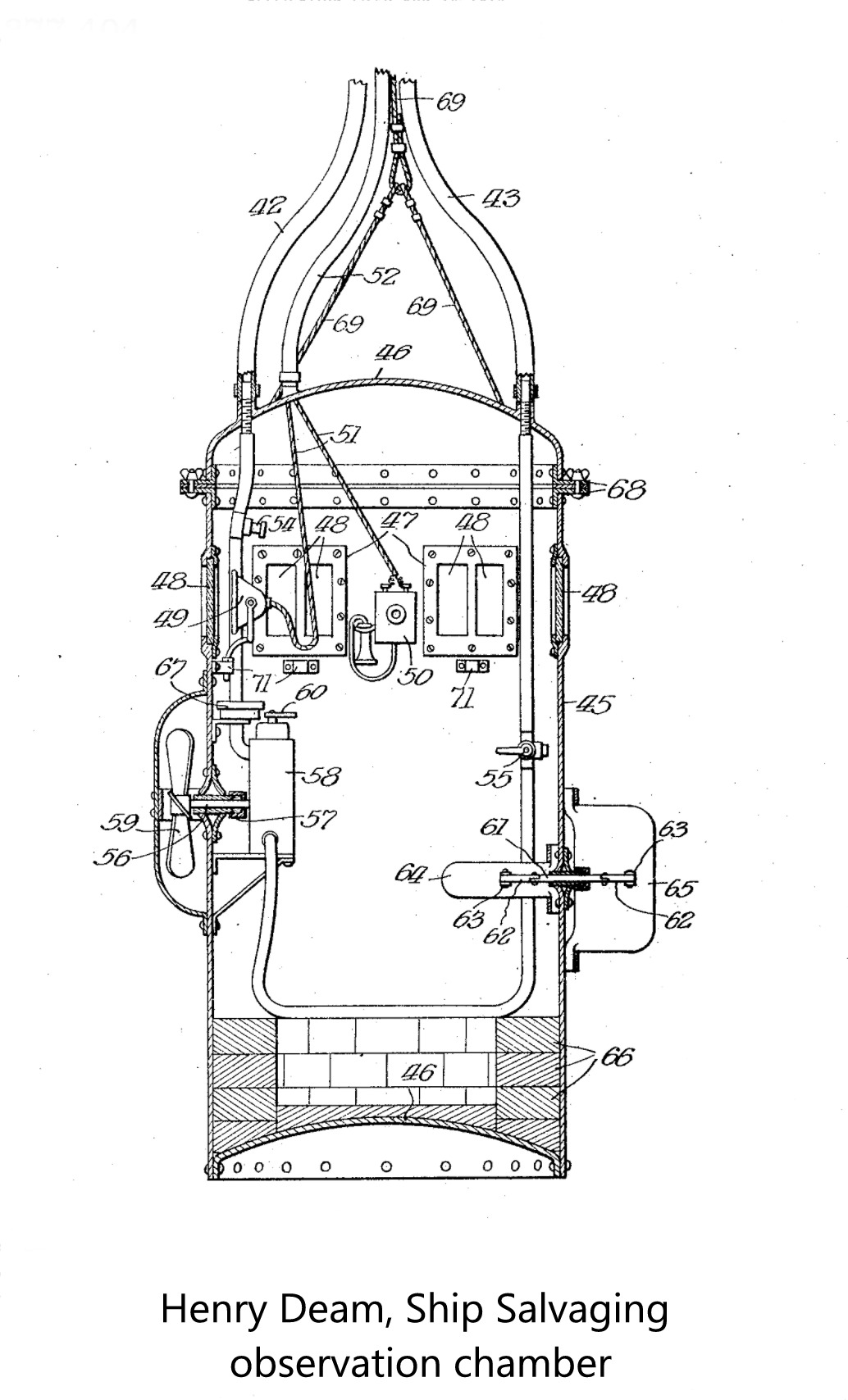
Henry D. Deam designed both a diving bell and a diving suit for recovering ships at great depths.
1921
Josef Kamieniecki
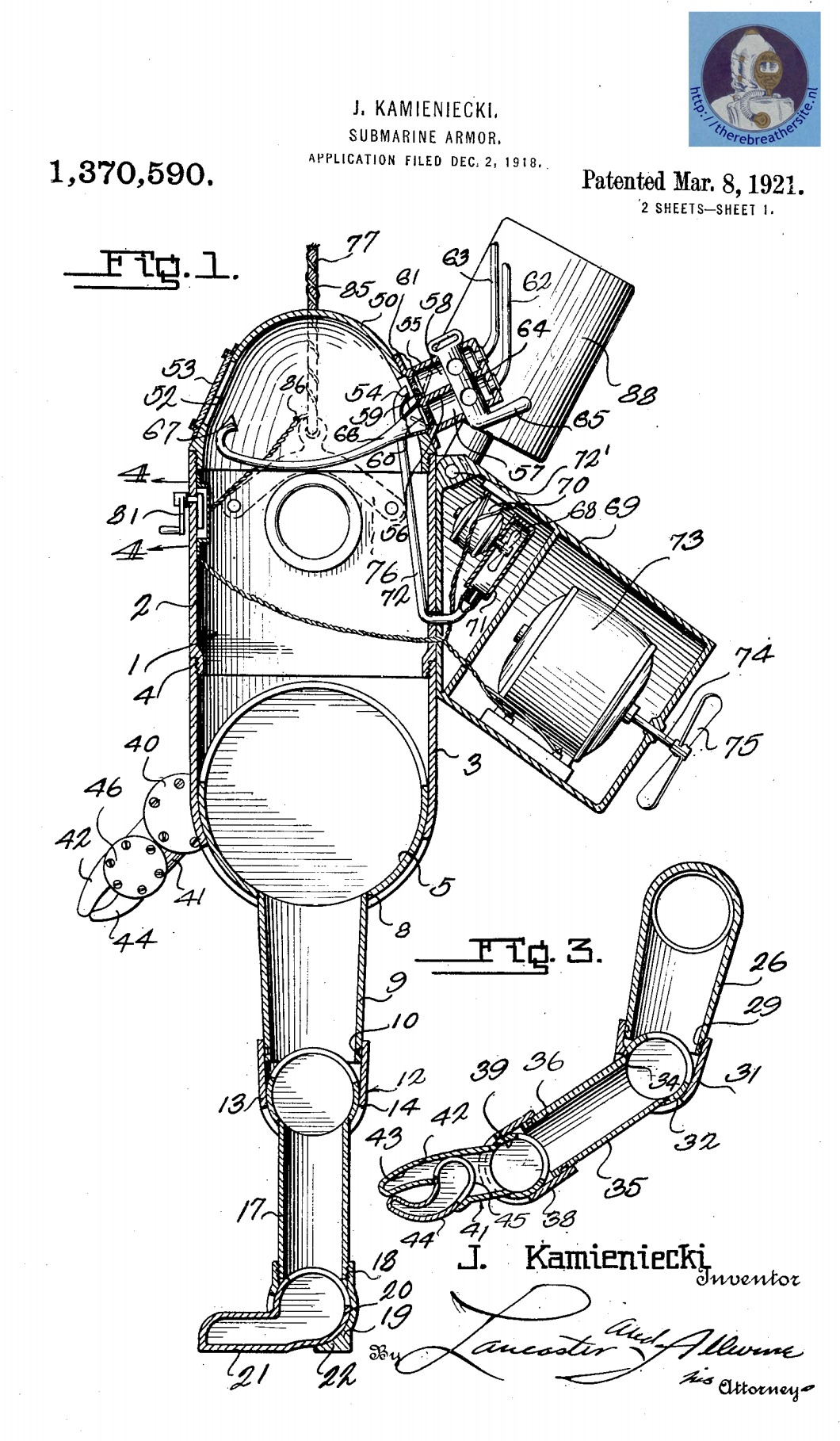
The Russian immigrant who invented in Chicago and also patented in the USA describes a suit using a lot of fantasy. It is therefore doubtful whether he ever realised his suit.
1922
A. Schrader’s Son Inc. USA
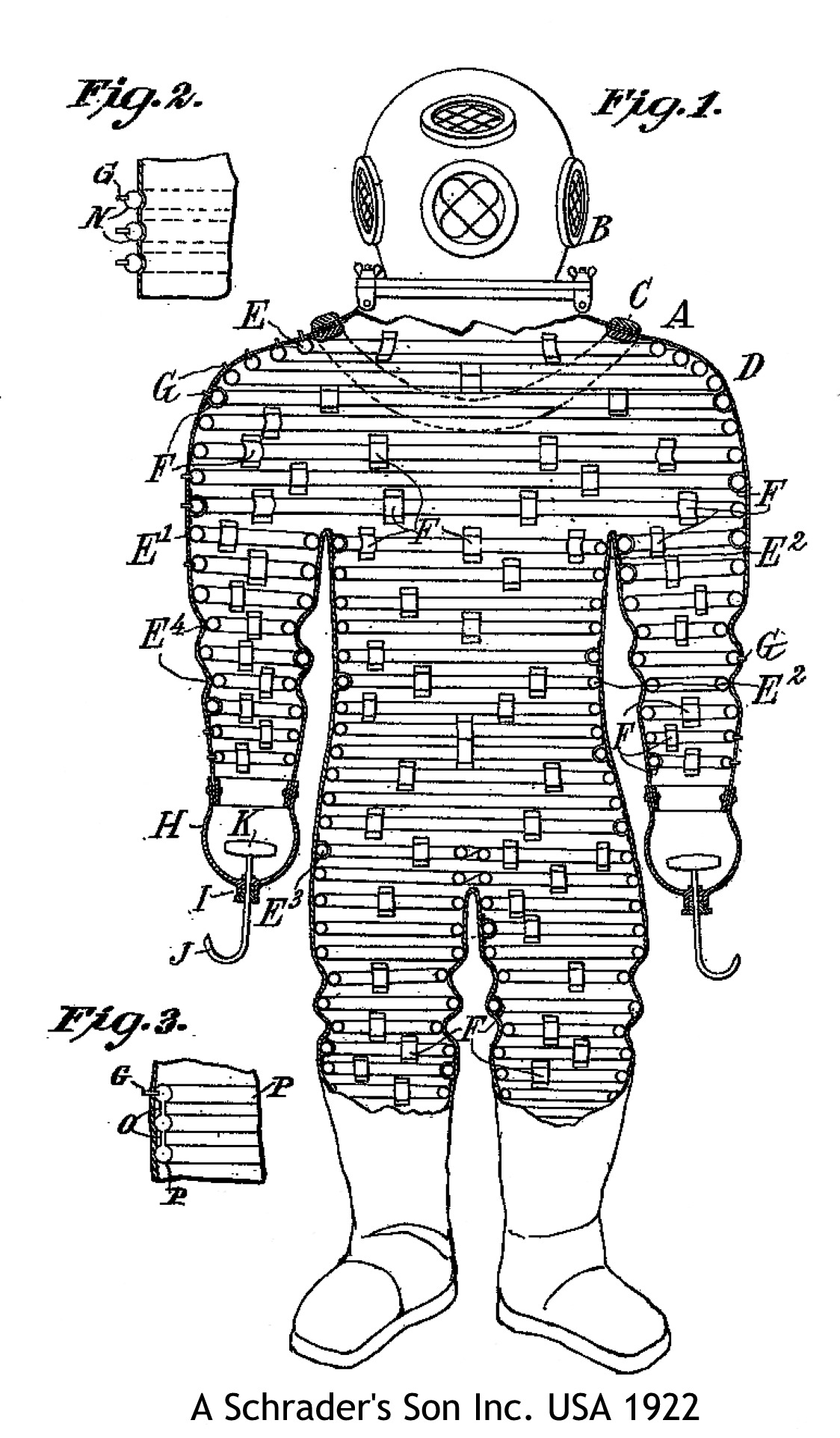
Schrader’s suit was envisioned as inflatable rings that were supposed to offer resistance to the occurring water pressure. This would allow the supplied breathing air to be reduced in pressure.
1922
Joseph de Saint Martin from France
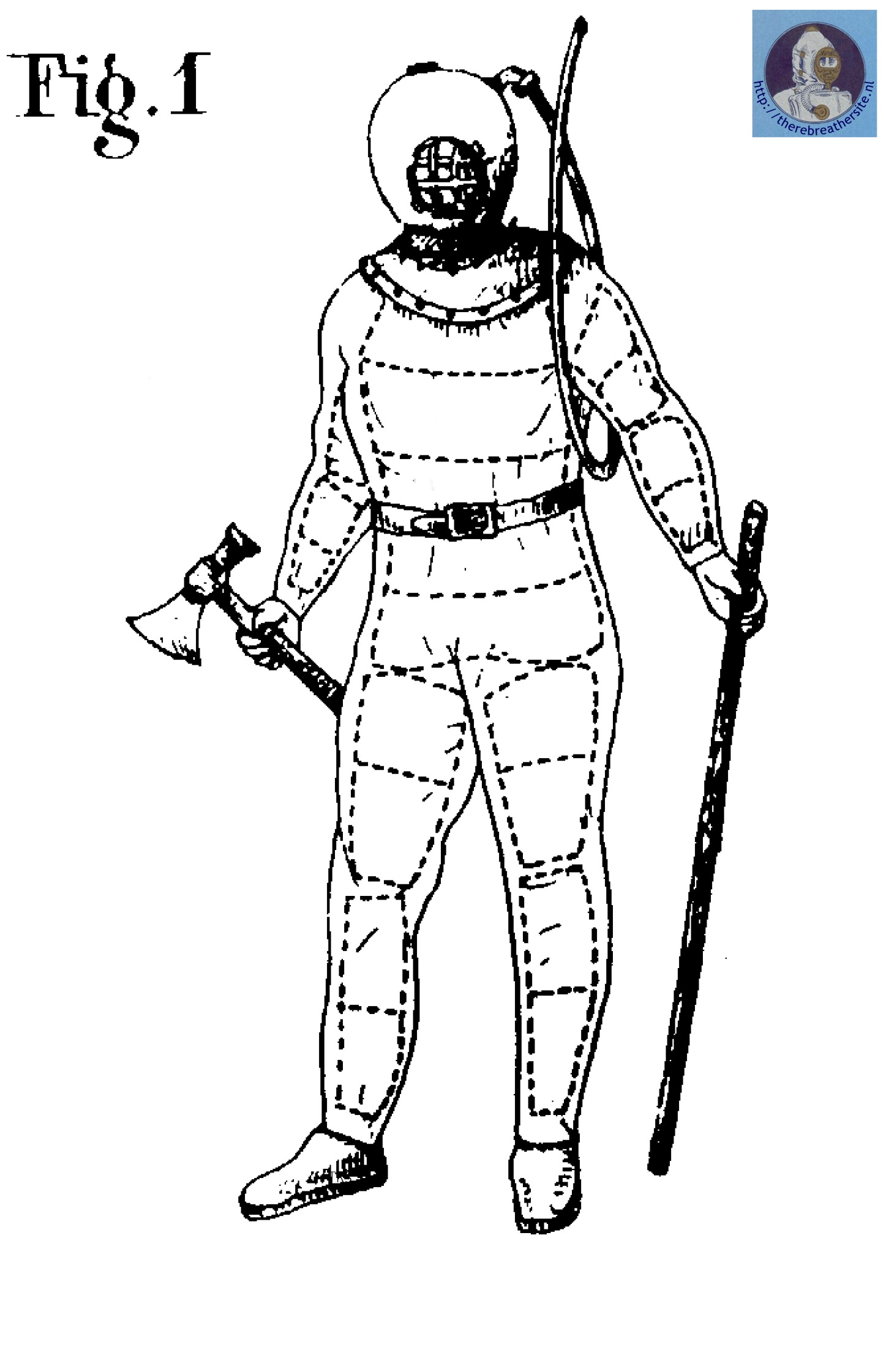
An extremely imaginative approach by Joseph de Saint Martin. His idea of cushioning the water pressure by putting a skeleton-like construction around the diver shows a lot of imagination. The suit will certainly be able to protect against the pressure up to a certain depth.
1922
Walter Carlitscheck and Otto Zander Germany
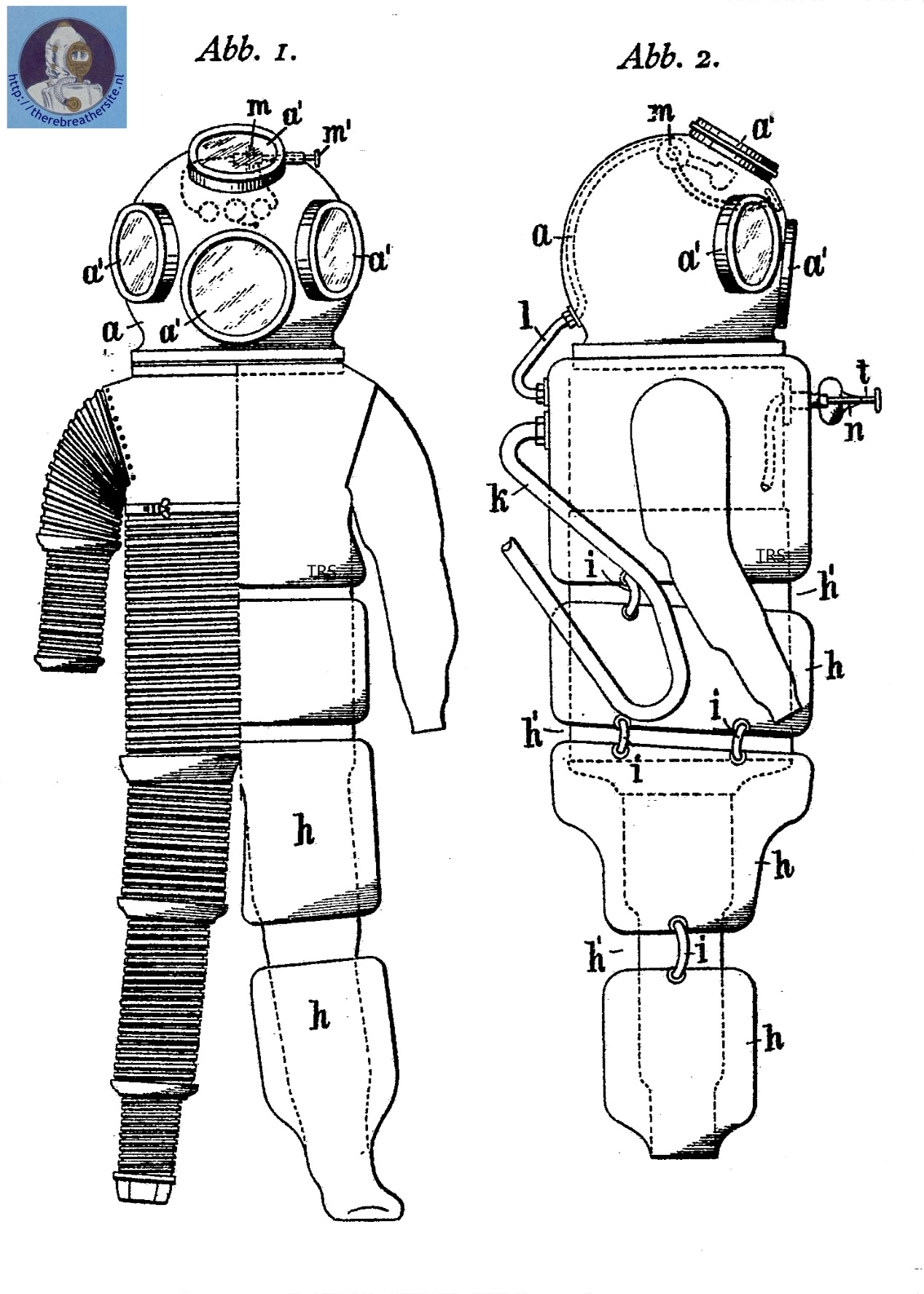
Carlitscheck and Zander designed a system whereby the exhaled air of the diver could be brought outside the suit through an ejector system. This eliminated the return hose that had to be run from the suit to the surface to remove the exhaled atmospheric air.
1922
Victor Armijo Campos
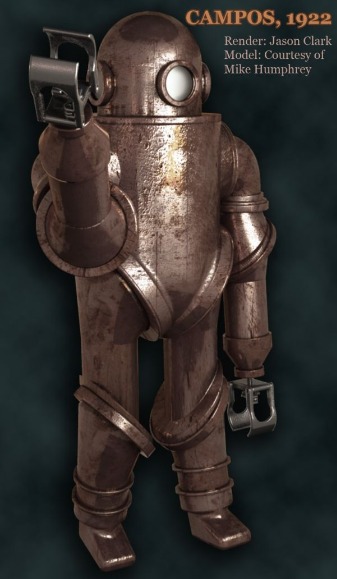
Victor Armijo Campos of New York, a Mexican living in the USA patented an atmospheric diving suit with oil-filled rotary joints which were not pressure-compensated. The suit was reportedly taken to a depth of 600f/184m.
1922
Giuseppe Gabanna
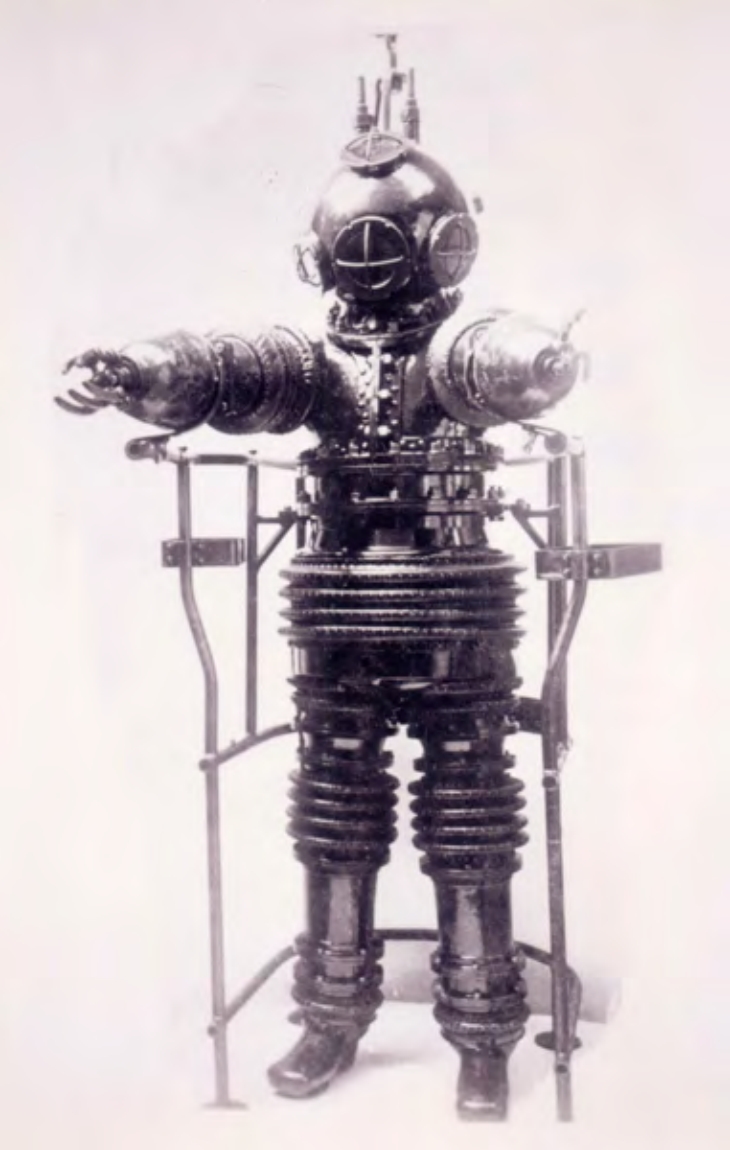
PER EMULARE I PESCI – A new type of diving suit with armour, which allows sea recoveries up to 150 meters deep. It was built by the Turin worker Giovanni Gabanna
1923
Octave Quenault and Gabriel Roux
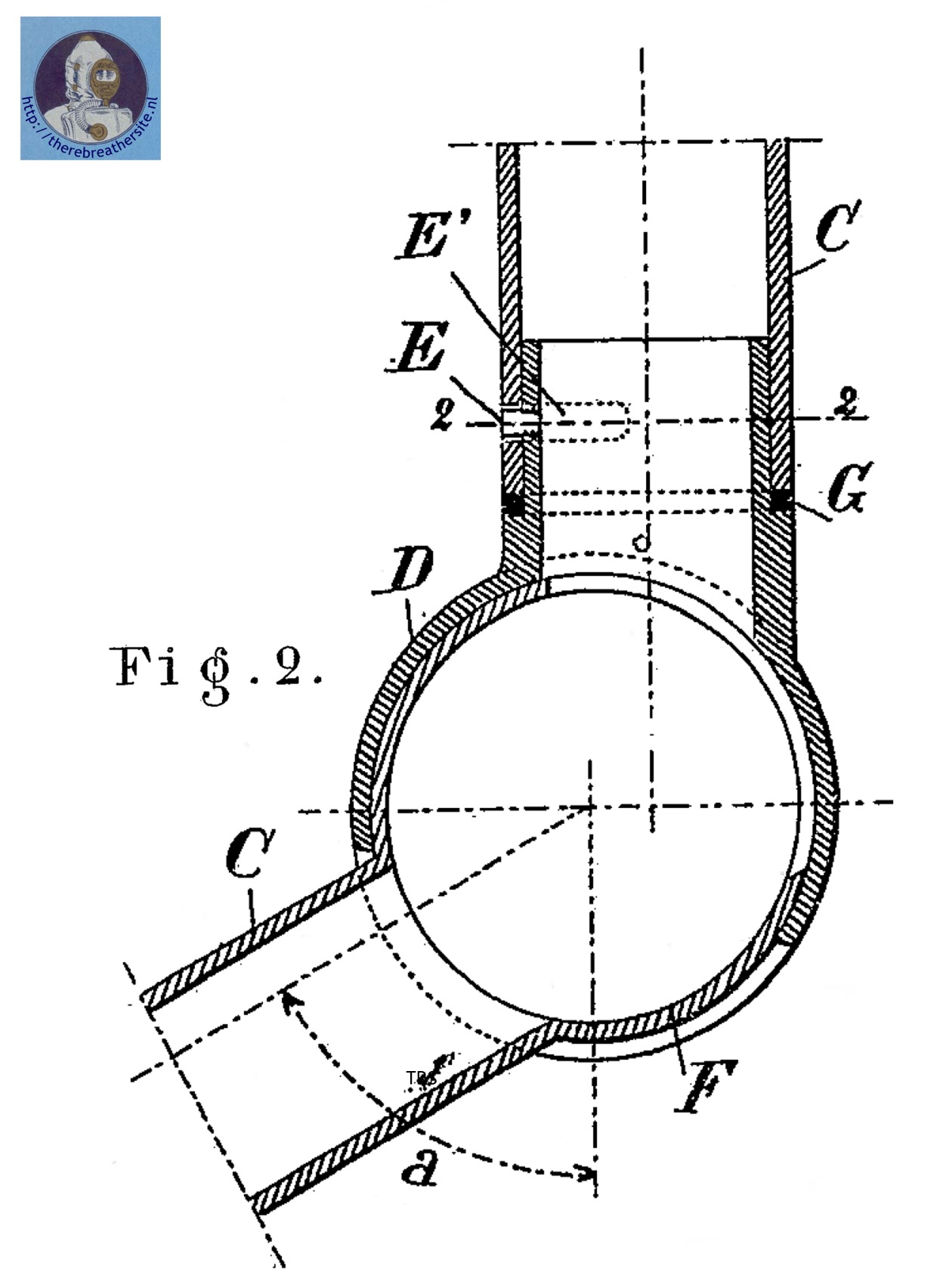
Strangely enough, the Frenchmen Octave Quenault and Gabriel Rouxin 1923 fell back on an old concept. They designed a metal diving suit over which a rubber suit had to be put on. The idea of preventing leakage in this way and providing the diver with atmospheric air was a principle that had been lying dormant for decades.
1924
Maxwell McGuinness and Herbert Tasman Davies

Pneumatically operated atmospheric diving suit
Whether the fantasies of Davies and Mc Guinness ever came to reality is doubtful. Their design of a pneumatically operated atmospheric diving suit does not seem very realistic.
1925
Verena Winifred Holmes
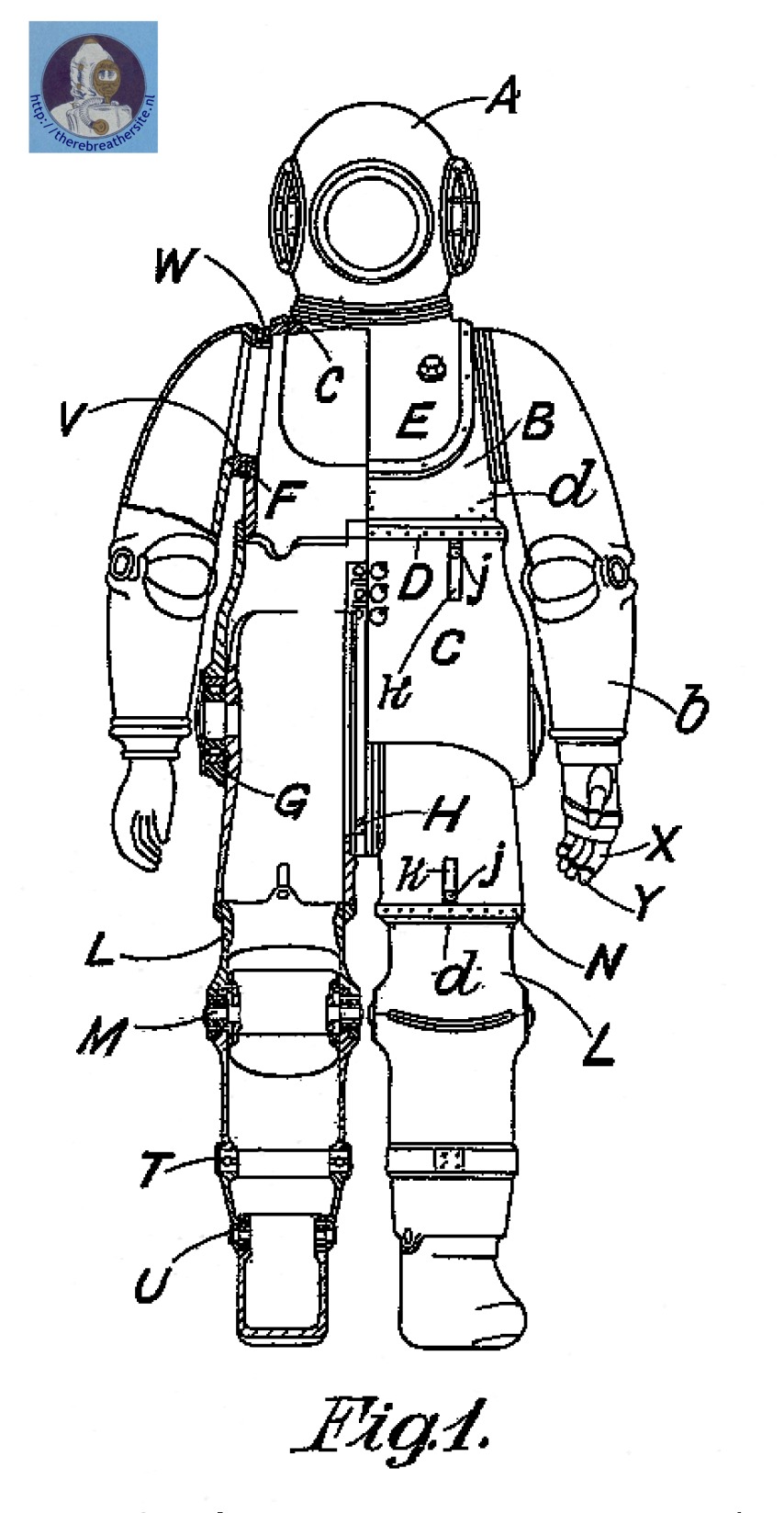
Verena Winifred Holmes (1889–1964), an English mechanical engineer and inventor, the first woman member elected to the Institution of Mechanical Engineers (1924). Verena patented a ridged Diving Suit or Diving Armor with great design quality.
1926
Bernhard Dräger
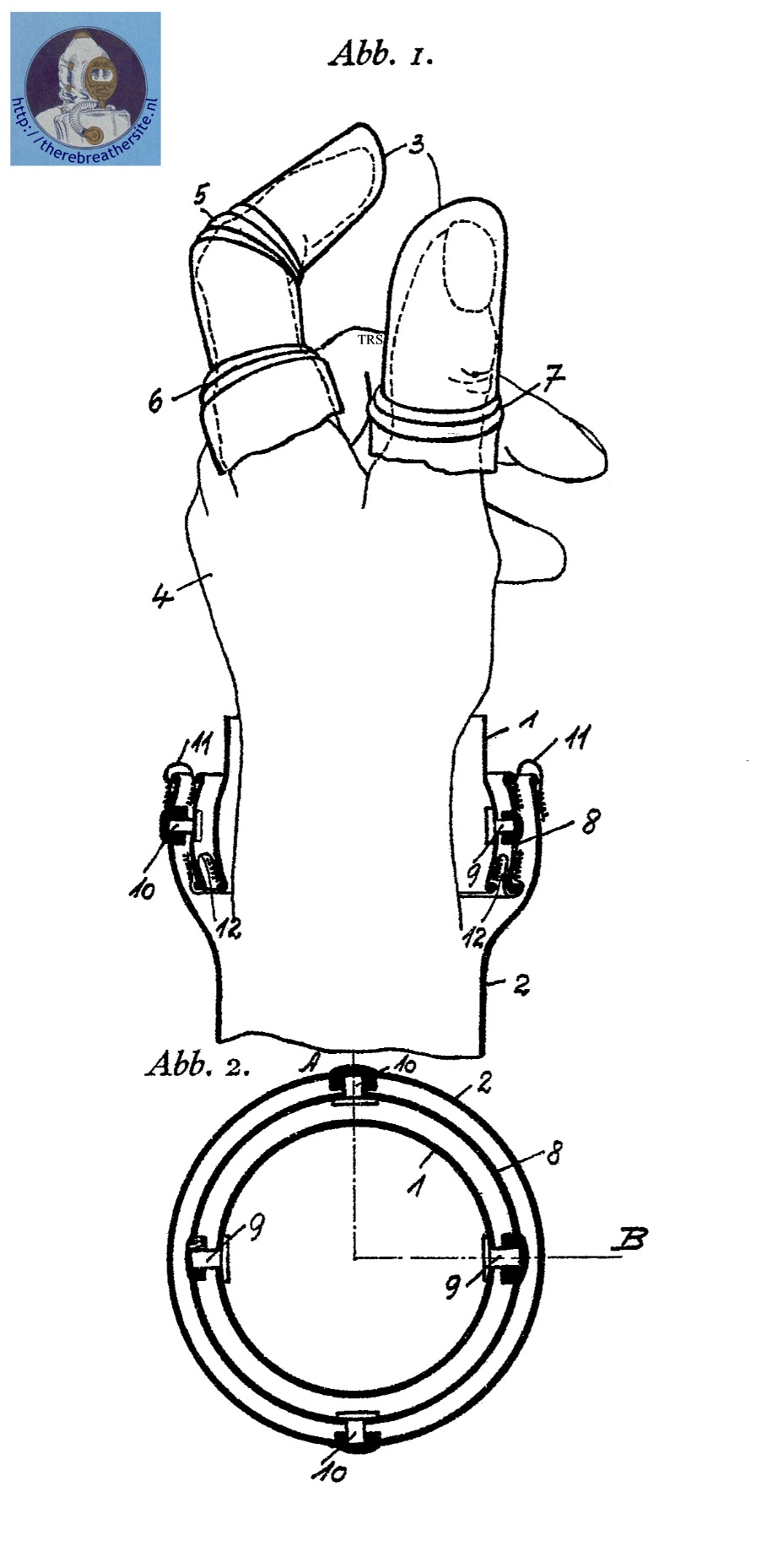
Approximately three years before Peress introduced the oil-filled hinge in 1929, Bernhard Dräger patented a cardan-type joint that formed a seal with two diaphragms.
1926
Hermann Ahrens Germany
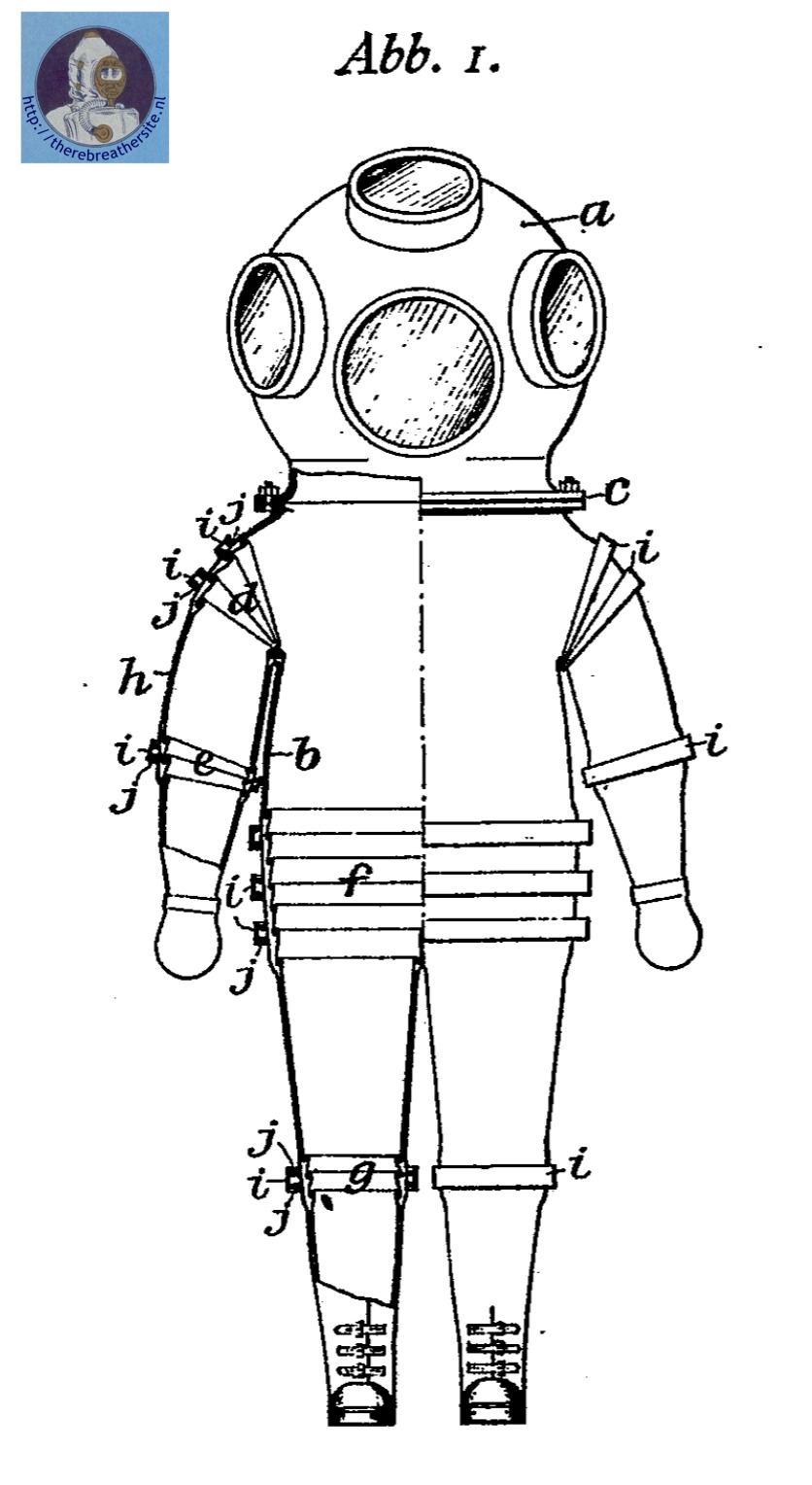
Once again, the concept emerges of cladding a metal suit with a rubber seal. Ahrens sees the problem that the rubber will be pressed between the hinge points with great force by the water pressure. Ahrens suggests solving this by keeping the rubber at the hinges away from the moving transition parts.
1928
Ernest Reginald Clifford
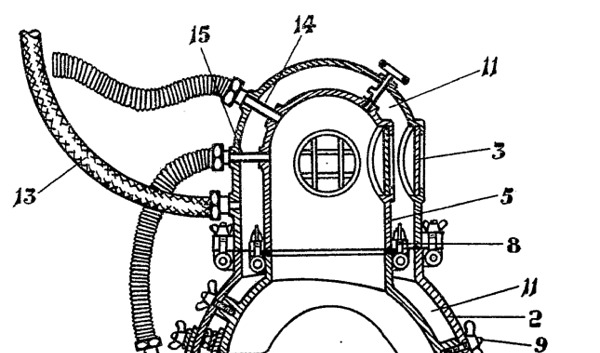
E.R. Clifford patented a divers’ dress comprises an inner and outer rigid corselet and an inner and outer rigid helmet, the space between forming an outer high pressure zone to support the external pressure, while the inner space form a relatively low pressure zone in which the diver breathes.
1929
Karl Hippsich

The suit by Karl Hipssich clearly shows great flexibility at the time the patent drawing was made. As far as we know, the suit did not become a great success, which is highly doubtful with today’s knowledge. The rings that slide over each other would certainly have jammed under the water pressure at greater depth and none of the hinges would bend or rotate. Nothing more than the patent has been found.
1930
Vivian Roy McBride
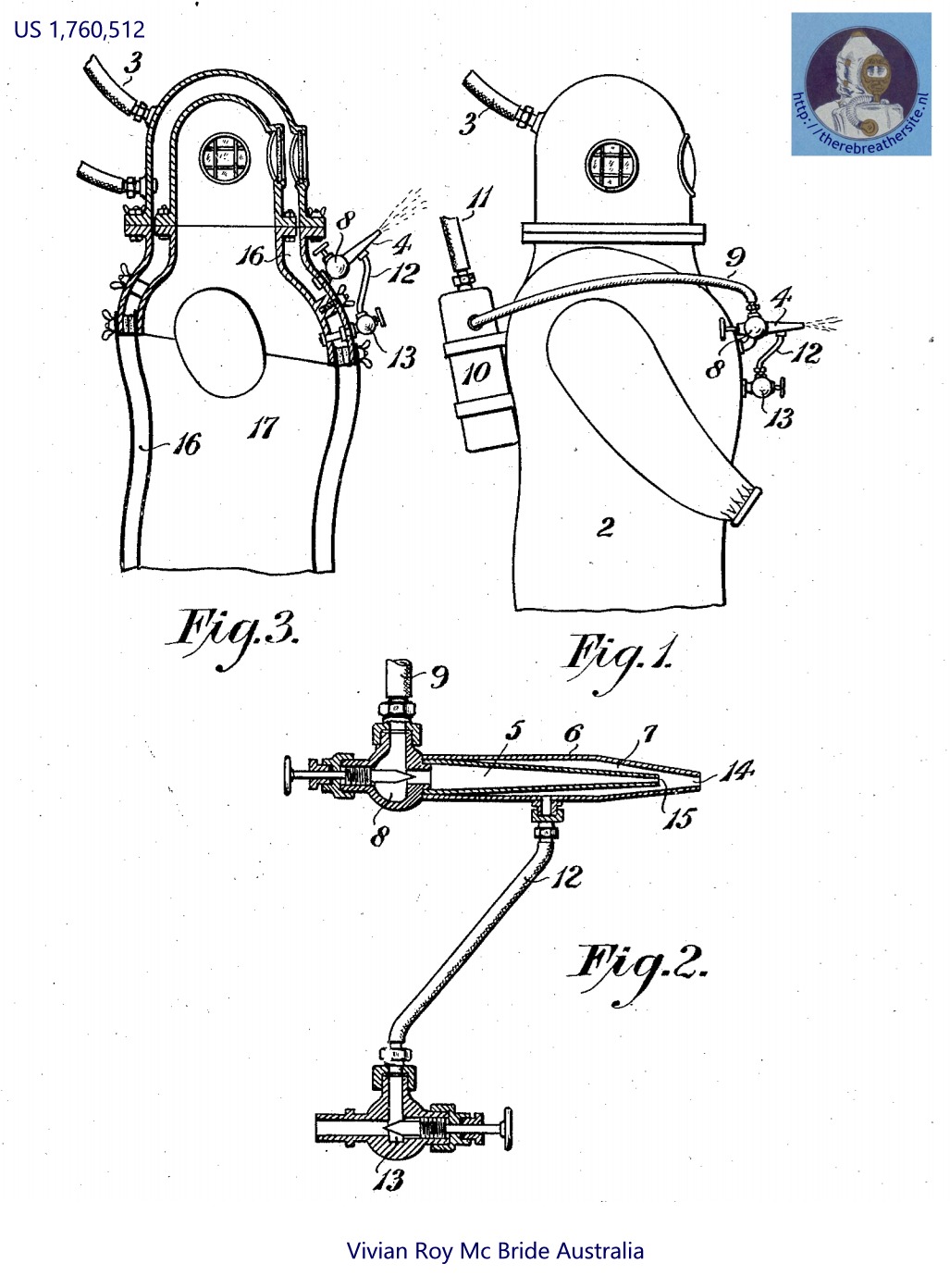
The invention of the Australian McBride concerns an injector type air pump with which the inventor can increase the low pressure of the exhaled air in the inner suit of a diver.
1930
Artiglio and SS. Egypt

In May 1922 P&O’s steamship Egypt sunk forty miles off the coast of France with a treasure of gold worth more than a million pounds sterling in her strong room. This the story about the Artiglio and Egypt
1933
Carl Wiley and SS. Islander
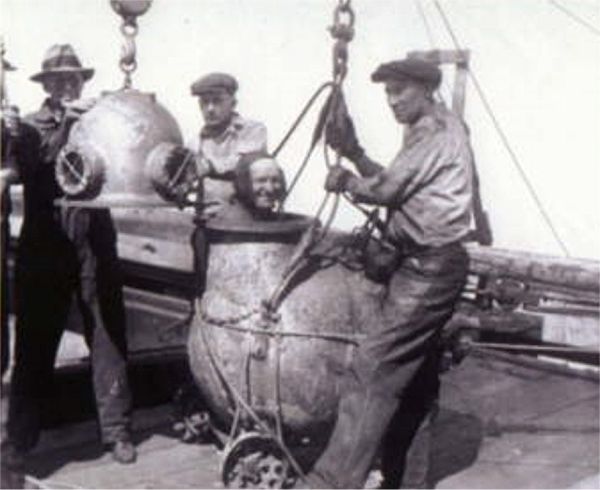
The Wiley “Bell” is not a bell. It is a atmospheric diving apparatus. You could call it a one man submarine. Carl Wiley and his companion inventor Elbert H. Wiley patented their invention in 16-12-1931.
1934
Connelly Iron Mike

Iron Mike was built in the early 1930s by the Empire Marine Salvage and Engineering Corporation of New York City, which was headed by Thomas P. Connelly.
